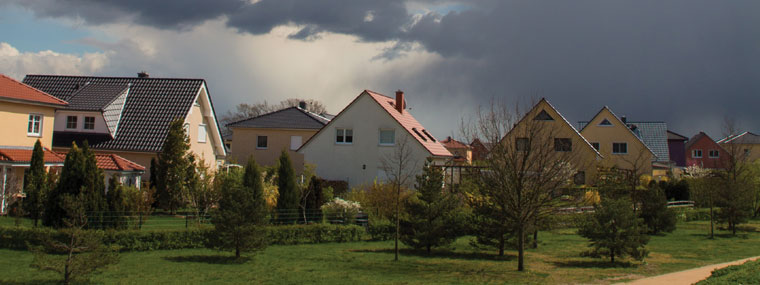
Good Downtime versus Downturn Downtime
By Diane M. Calabrese / Published December 2021

Time passes. The minutes and days move along whether they are filled with work or not. Contractors, distributors, and manufacturers in our industry want to fill their hours with productive work, but things happen.
On a large scale, natural disasters can take parts of the grid offline, interrupt transport, and impede employees from getting to work (or continuing work, in the case of contractors). Local disruptions—a machine or vehicle breakdown—can also force a halt to operations.
If operations must be stopped, what does an employer do about the employees who are not required during the interval? The answer to that question is part of a bigger response to downtime: be prepared for downtime and be ready to put it to good use.
First and foremost, however, try to avoid experiencing downtime. That’s what Doug Rucker, owner of Clean and Green Solutions in Porter, TX, does.
For one, Rucker aims to avoid starting jobs in the track of storms. “With weather radar now that can be pretty close to accurate, we are able to tell how long a storm will last, or if it will blow through quickly,” he explains.
“Our main goal is to finish the job if we can,” says Rucker. “We have had times where we will sit and wait anywhere from 20 to 30 minutes for a storm to pass; then we get back at it and finish the job.”
Rucker explains that for any job he evaluates the full complement of parameters when scheduling—and especially so when there is a potential for bad weather. “I really try to take into account how long the storm might last versus the drive back, setup, breakdown, etc. before deciding to reschedule.”
Some downtime is seasonal. Making good use of it begins with looking at the year in its entirety. “We are in a region where we do not really experience too much downtime, or ebbs or flows,” says Rucker. “Once fall is over and winter hits, we choose to slow down a bit and work fewer days in a week.”
In other words, Rucker anticipates downtime and builds it into the schedule for a year. That predictability is a boon to employees and the owner.
The abridged schedule, known in advance, enables the team to make good use of every day. “Winter to me has always been about enjoying the holidays, spending time with family, and doing a little planning for the next year,” says Rucker. “We try to stick to working only two or three days a week, and for the most part that works out pretty well for us.”
Among the factors that can lead to regrettable downtime is the inability to hire employees at all. A contractor who does not wish to be cited tells us that he has had no crew for a year. He refers to difficulties with the labor market that make it very difficult to hire. It’s not a happy scenario.
There are prospective clients. There are job openings, and there are no takers for the jobs. That’s a very challenging type of downtime to experience, but we have heard versions of the same from others since early in 2020.
In the business literature there’s the term “maximum tolerable downtime,” which refers to the amount of time a business mission or process can be paused without dire consequences. The direst of all is the end of the business.
Easier sorts of downtime to manage are those that are nettlesome but transitory. A water pipe that breaks and puts a distributor’s service center offline for 24 hours while it’s fixed and cleanup takes place should not close a business.
Yet the incidental happenings like unpredictable pipes and a car taking down a utility pole carrying the electric power to a manufacturer’s plant should be absorbable because of good planning. Short-term problems will not derail a business that has adequately assessed risks and steeled itself for them.
If cash flow and credit are healthy, a business can make an emergency repair to a water pipe or wait out the return of power without a noticeable setback. Similarly, a business with an established routine maintenance schedule reduces the likelihood of a machine breakdown.
Managing risk to avoid downtime also requires a critical look at vendors. Using more than one vendor and making sure the vendors used are not in the same region adds redundancy. If a forest fire halts shipments from one state, they may be able to flow from another.
Good Downtime vs. Downturn Downtime
In vigorous economic times, downtime will still occur. Call that good downtime, and we will consider it below.
Downturn downtime deserves priority, however, and we start with it. The U.S. Small Business Administration (SBA) offers Survival Tips for Man-aging During an Economic Downturn. (Read the entire list of 14 tips—excerpted from Small Business Success magazine at the SBA.gov website.)
The four most appropriate tips (to our mind) center on four ideas for doing. As it happens, the four are recommendations that have been covered in these pages many times. We sum them up as focus, strengthen, hone, and train.
Focus encompasses a sharp appraisal of the products or services offered. Keeping equipment that’s used only once a year for a cleaning job that has a low profit margin is costly. High inventories take space, accumulate dust, and begin the trek to outdated while in storage; prune them.
Focus isn’t easy. It’s like trying to clean out the garage or a cupboard at home. There’s always the maybe-it-will-be-needed thought. A certain ruthless attitude is required. And downtime precipitated by a downturn might be the catalyst.
Strengthen ties with creditors, clients, and vendors. It would be easy to commiserate, but it’s better to discuss what can be done to shore up interactions. Clients and vendors may be amenable to new financial terms in exchange for more orders. Creditors will be encouraged by evidence of strong ties with clients and vendors.
Hone may be the simplest action. Make certain that all employees on the roster are filling their time productively. Some may need to increase their workload. Perks, such as Friday lunch on the owner, may have to be suspended.
Train employees with time avail-able should be expected to avail themselves of free online training from entities like OSHA. Members of professional organizations, such as CETA, PWNA, and UAMCC, can secure training modules for employees through the organization.
Don’t let a minute go to waste.
What about the good downtime? That’s the sort that happens in every business because of the vagaries of the business cycle.
A contractor might have a light day, even without inclement weather. Use the extra hour or two to hold a refresher session on a safety topic. Or, use the time to discuss refinements to an approach.
Distributors and manufacturers who are slowed down by snow interfering with customers or deliveries can schedule an impromptu session on a safety topic. Or they can hold a meeting to gather ideas from employees about possibilities for streamlining.
Service center employees may have suggestions about how to handle repairs faster. Production line employees may see possibilities for improvement or innovation.
Any type of company can use the good downtime to assess an essential part of the business. Divide the business into its components, such as product or service, customers, marketing, community niche, and organization. Look at each component from several vantages.
There may be possibilities for bolstering products or services. Perhaps a machine could be
bundled with more ancillaries for a better sale upfront. A contractor might bundle services to get a higher price and earn more money at a single jobsite.
Review marketing techniques. Verify that the website is up to date. During a busy interval it’s easy to forget to add a new product or service. Make certain contact information is accurate and email and contact forms function as they should.
Evaluate the connection of a business to the community. If it’s been difficult to find new hires, are there professional organizations or schools that may be more than ready to assist with referrals? Might it be prudent to offer to talk with students to let them know about the scope of our industry and the possibilities for employment in it?
Organizational checks often get tied to business plan reviews, yet there’s no reason to fail to review organizational matters when there is downtime. Perhaps there’s been thought of finally firmly linking automated inventory, sales, and billing systems. Downtime affords a chance to try out many of the available packages that do it all.
Use the good downtime to give serious thought to how to expand the customer base. Have there
been inquiries from people about services or products not provided? Should some of the services or products be added?
Conditions are a little complicated for businesses. Just remember that time passes, things change, and doing nothing is not an option. Fill the hours with activity and optimism.





